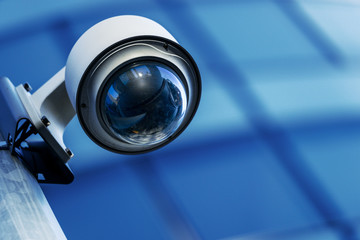Personal growth and self-improvement are essential aspects of living a fulfilling life. Podcasts offer a convenient and engaging way to learn about these topics.
This podcast features Dan Harris, the fidgety journalist who had a panic attack on live TV and discovered meditation. He interviews meditators, top scientists, and other thought leaders. Visit Our Website to learn more.
The School of Greatness
The School of Greatness is a podcast hosted by Lewis Howes, who is a New York Times best-selling author and two-time All-American athlete. The podcast features interviews with world-renowned leaders in business, sports, entertainment, science, health, and literature. It inspires listeners to pursue their own greatness and live their best lives.
The podcast covers topics such as creating a vision, turning adversity into an advantage, cultivating a champion’s mindset, mastering your body, and building a team. It also teaches practical strategies and tools that help listeners achieve their goals. This self-improvement podcast is a must-listen for anyone who wants to reach the next level in their life.
Lewis Howes is a lifestyle entrepreneur, high-performance coach, and keynote speaker. He’s also the host of The School of Greatness podcast, which has more than eight million downloads. He’s a what-you-see-is-what-you-get type of guy and is driven to help people live their best lives.
In the podcast, Howes interviews famous personalities from different industries to provide insight into what makes them successful. He discusses their backgrounds and the challenges they faced in their lives. He also talks about their personal stories and how they overcome adversity to achieve success.
His guests include Olympic gold medalist Shawn Johnson and Pencils of Promise CEO Adam Braun. He’s a big fan of putting people on the show who have new ideas and can offer valuable insights. He says that he likes to have coaches, authors, and athletes on the podcast. He dislikes having mediocre people on the show, such as radio hosts and comedians.
He also avoids putting people on the show who are only interested in promoting their products or services. He prefers to have people on the show who have a positive message and can help improve the lives of others.
The School of Greatness has a community of more than 100,000 active listeners who share their experiences and tips on how to become better. Its audience is diverse and includes a wide range of people, from students to professionals. The podcast is available in multiple languages and can be listened to on any device.
The Jordan Harbinger Show
Jordan Harbinger is the host of The Jordan Harbinger Show, a top shelf podcast named Best of Apple in 2018. The podcast features interviews with high-profile guests, and the conversations are always in-depth. The guests share never-heard-before stories and thought-provoking insights. The podcast is also full of tactical bits of wisdom to help you live a more fulfilling life.
Jordan is a Wall Street lawyer turned interview talk show host and communications and social dynamics expert. He has hosted and continues to host a podcast with over 6 million downloads per month. He has a gift for getting his guests to open up and tell their unique story, which helps listeners understand the complexities of our world. The podcast has a wide variety of guests from different industries and backgrounds. The topics range from self-improvement to scientific breakdowns of the psychology of persuasion and influence.
During the early days of his career, Jordan was a corporate lawyer. But he realized that he was not happy in his job. He wanted to have more control over his schedule and his work, so he started his own business. He began recording his conversations with his clients and distributing them on CDs. But that was not enough for him, so he found a way to upload them to the internet. He eventually stumbled onto podcasting, and that changed everything for him.
When Jordan was interviewed for the podcast, he talked about how his experience with the podcast has helped him to grow his own business. He has learned many lessons from the process, including that it is important to listen to your audience and adapt accordingly. He has also learned that it is not always necessary to have a massive budget to produce a great podcast.
The Jordan Harbinger Show has millions of downloads per month and is one of the most popular podcasts on iTunes. Its success has helped Jordan to become a bestselling author. The podcast has a large following and is a great resource for entrepreneurs, small businesses, and people interested in personal development.
The Minimalists
The Minimalists are a duo of American authors, podcasters, and filmmakers who promote the minimalist lifestyle. They believe that a minimal lifestyle can help people find happiness and peace. Their podcast features interviews with other minimalists as well as guests from different fields. The show is free to listen, but you can support the hosts by donating money. This way, you can ensure that the podcast continues to produce high-quality content.
The term minimalism refers to a lifestyle that focuses on only having what is necessary. This means fewer possessions, less clutter, and more time for hobbies and activities. Minimalists also prioritize relationships over material objects.
Joshua Fields Millburn and Ryan Nicodemus have been called “the minimalist movement’s American ringleaders” (New York Magazine). They started the podcast after realizing that having more stuff wasn’t making them happy. They have since written several books and spoken at universities and companies like Apple, Google, and Harvard. Their podcast is popular with Americans who are fed up with consumerism.
In a typical episode, the minimalists will discuss topics such as happiness, home organization, and personal growth. They will also answer listeners’ questions and provide tips on minimalism. They also encourage listeners to get involved with their community and share their journeys. They are committed to helping people lead simpler lives, and they are passionate about bringing positive change to the world.
However, some people may have the wrong idea about minimalism and dismiss it as a bad thing. In reality, minimalism can help you save money, reduce stress, and live a more fulfilling life. However, it is important to remember that minimalism is not a rigidly defined set of rules. It is a process that is unique to each person.
For example, some minimalists may only own a few items of clothing, while others might have an entire wardrobe. Regardless, minimalism should be tailored to each individual’s needs.
It is important to avoid comparing yourself to other minimalists, as this can be counterproductive. It is also important to remember that minimalism is a process and not a goal. It is okay to break the rules occasionally as long as it does not hurt yourself or other people.
Self Improvement Daily
Self improvement podcasts are an excellent way to stay motivated and engaged in your personal development journey. They offer a wealth of inspiration and knowledge, and provide a unique way to learn while on the go. In addition, they can help you stay positive and focused during difficult times, such as a long commute.
Self-improvement podcasts cover a wide variety of topics, including productivity, relationships, and personal finance. Moreover, they also address various aspects of mental health, such as anxiety and depression. In addition, they often feature personal stories of individuals who have overcome mental illnesses, giving listeners hope and motivation.
Whether you’re looking to improve your relationship skills, boost your productivity, or just find more joy in everyday life, there’s a podcast for everyone. Check out these top self improvement podcasts to find the right fit for you.
The Minimalists Podcast is an excellent option for those interested in minimalism. This popular podcast features interviews with minimalists and other successful people who have embraced the philosophy of living with less. Each episode is full of practical tips and advice, and the host is an expert in self-improvement.
Balanced Black Girl is another great option for millennials seeking to prioritize wellness and self-care. The show is hosted by Leslie Alfred, a blogger and fitness instructor who advocates for a slower, more conscious approach to life. The podcast is a refreshing and welcome departure from the “hustle culture” that many young people are accustomed to.
In addition to addressing the issues faced by women of color, The Self Improvement Daily podcast offers a variety of tips and strategies for success. The episodes are typically five minutes or less, making them easy to digest and apply to your day-to-day life.
Lastly, the UnF*ck Your Brain podcast is an excellent resource for high-achieving feminists who struggle with anxiety and imposter syndrome. Using evidence-based practices, the podcast teaches listeners how to overcome social conditioning and self-critical thoughts in order to become more confident and productive. This podcast is particularly useful for women who want to build their leadership capacity and become a more effective communicator.






